
Most of the time at life drawing class I work on paper with either pencil, charcoal, chalk or ink. That's pretty standard as far as life drawing goes. However, I was inspired by our tutor to try my hand at "drawing" with plasticine. I say drawing, rather than sculpting, because the process of looking at the human model posing for us, seeing the rhythm of forms that make up that pose and creating my response to it all in plasticine was done with the aim of helping me see things clearer - when working on paper.
When I draw on paper, it's always a challenge to interpret the 3 dimensional form of the living person in front of me into the 2 dimensional space within the surface of that sheet of paper. Plasticine, of course, can be pushed and pulled in 3 dimensions, so working with it really showed me that when I work on paper I frequently default to thinking of the model from one point of view i.e. where I'm sitting. I'm so focused on the parts facing me that I'm hardly conscious of the parts I can't see, despite their obvious relationship to eachother.
Plasticine forces me to pay attention to all the planes om all body parts. I have to answer the questions I subconsciously avoid when drawing on paper.
Here's the same model as above, shot from slightly different angles.
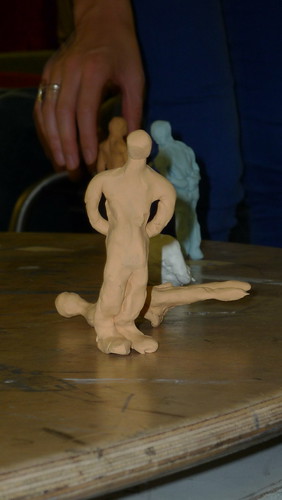
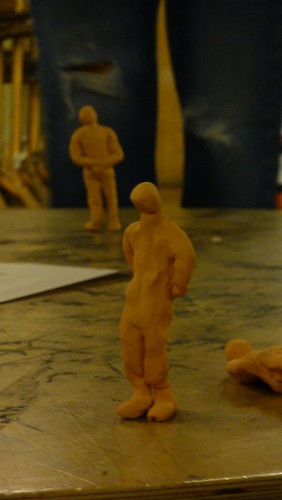
Created in 15 minutes - the same amount of time we have with our medium length poses when working on paper. As always, the key here is to capture the essence of the pose, but in plasticine it should also read from any angle. Here it is again along with models created by others in the group:
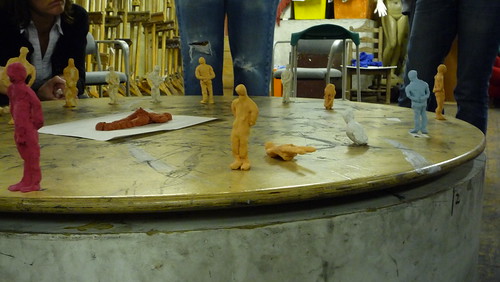
What I dig most about seeing these is that each model emphasises a different aspect of the pose. They're all of the same pose, so I assume it's down to each artist's individual interpretation.
Here's two more by me:
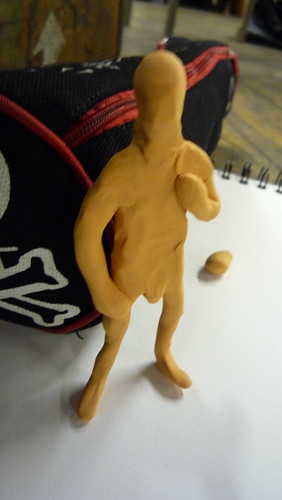
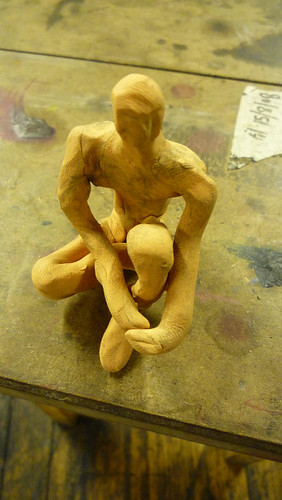
The pose on the left was held for 10 minutes, making it more of an exercise than a study. A good one too coz it opened my eyes to being aware of the whole body in a pose.


Taking pictures of my plasticine creation also made me aware of composition and how rarely I think about it when drawing on paper. But it's really just as important as anything else in the process of picture making. We actually alternated between paper and plasticine for this one.
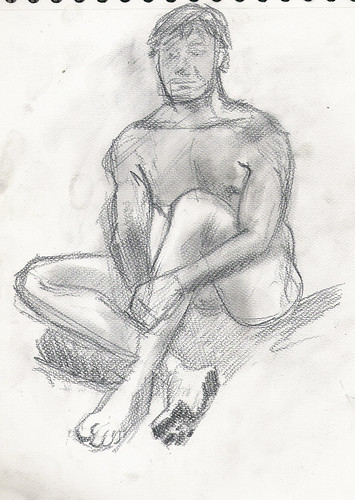
I walked around our model, shaping the plasticine in response for a couple of minutes then sketched on paper from one spot for a another couple of minutes and so on, for 20 minutes in total. Obviously, I didn't draw multiple perspectives on paper, but by alternating between the two processes, I all of a sudden felt more connected with the subject and much more aware of the forms I was studying. The drawing above is pretty poor, but while making it I sensed a truly positive change in my approach.
Final drawing of the evening:

I found this exercise of working with plasticine while thinking about it in the context of drawing very engaging. I was rewarded with an enhanced sense of awareness of my drawing habits and working methods - which ultimately improved my approach to the drawing process as a whole. Hopefully the drawings themselves will start to look better to me too, but to be honest that's always secondary to the process itself.

No comments:
Post a Comment